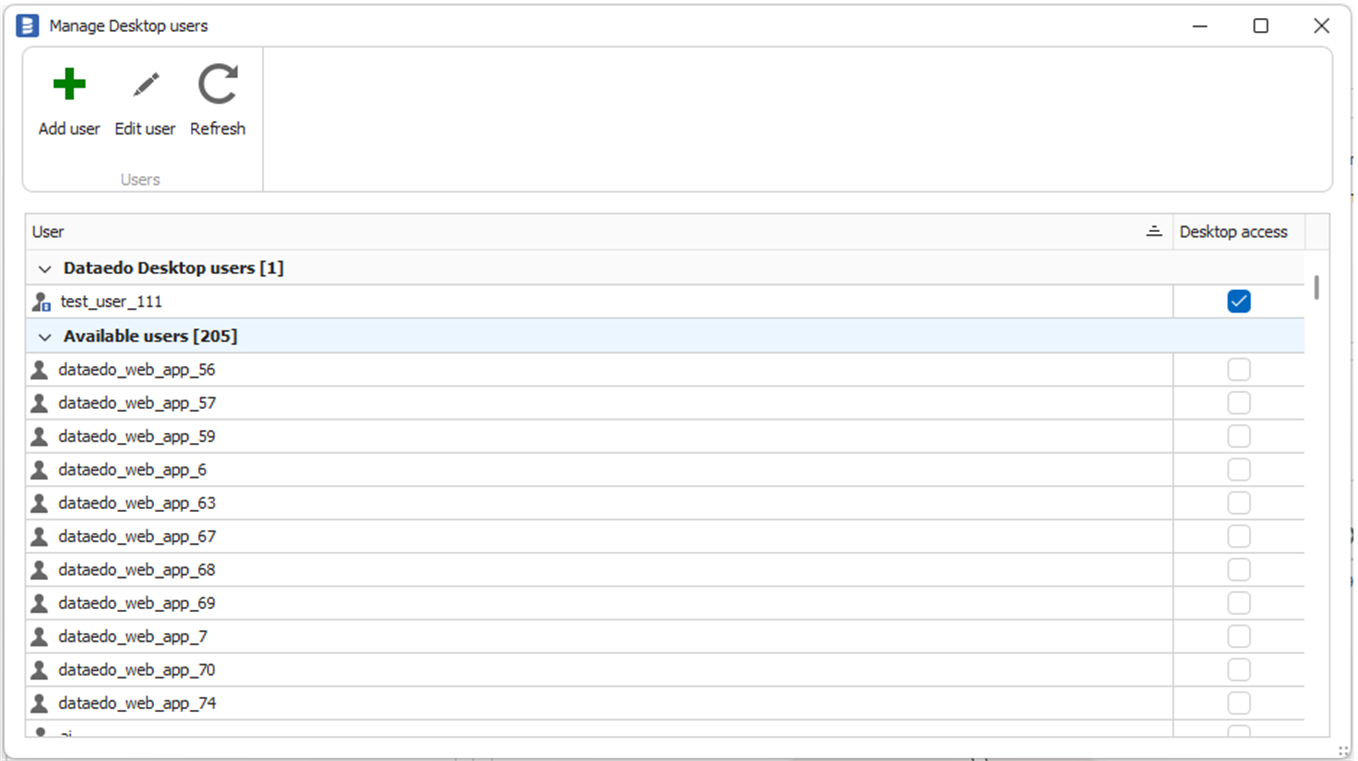Release notes 24.1
Dataedo version ``24.1` is out! Take a look at this release's highlights:
🚀 24.1 Highlights
-
🟢 New Statuses System Track progress of manual objects with draft/published statuses.
-
🧭 Steward Hub (Beta) Smart suggestions for terms, lookups, links, and data completion.
-
🔁 Stored Procedure Lineage Automatic lineage from T-SQL stored procedures (SQL Server, Azure SQL, Synapse).
-
🧩 New Connector Databricks Unity Catalog support added.
-
📥 Copy & Paste Imports Import data directly into interface tables via grid paste.
-
📈 Connector Enhancements
- Power BI: Paginated report lineage
- SSAS, SSIS, Dynamics365, ADF: Expanded lineage & metadata support
- Jobs/sequences import for Oracle & SQL Server
- Neo4j: Support for v5.13
-
🌐 Portal Enhancements
- Refreshed Lineage UI with on-demand loading
- New license-aware features (e.g., statuses, AI, domains)
- New login options: AzureAD, Google OAuth, one-time access code
-
🖥️ Desktop Enhancements
- Spellcheck in multiple languages
- Admin Console now built into the app
- Improved UI and performance in profiling & lineage
Release details
With the new year, we're planning on releasing more often. Therefore, we're happy to present you with version 24.1 and what we managed to deliver!
Statuses
Statuses are a foundation for a big topic: Workflows. "Workflows" is an umbrella name for a family of features that will help you manage the authoring of your documentation.
In this version, we focused on building the foundation of the draft/published system, which we plan to expand in the upcoming versions.
From now on, Dataedo allows setting a status for objects from a pre-defined list available in your repository. This enhancement (inspired by Jira) serves to provide users with the ability to accurately determine the progress phase of a specific object's documentation.
Setting an object's status is, at the moment, available only for manual objects: Domains and their Areas, all types of Glossary Entries (terms, policies, etc.), and Lookups.
The status is viewed and can be changed in both Dataedo Portal and Desktop.
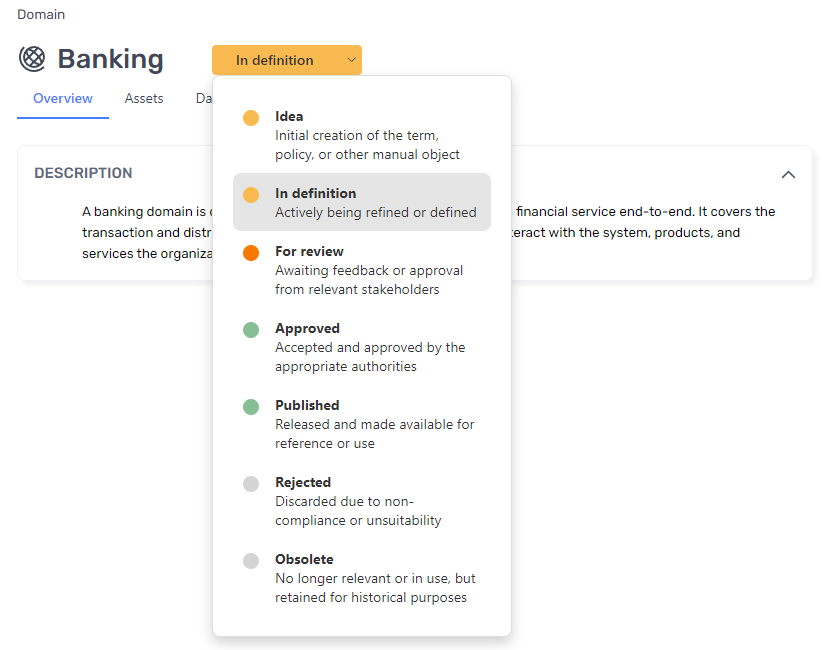
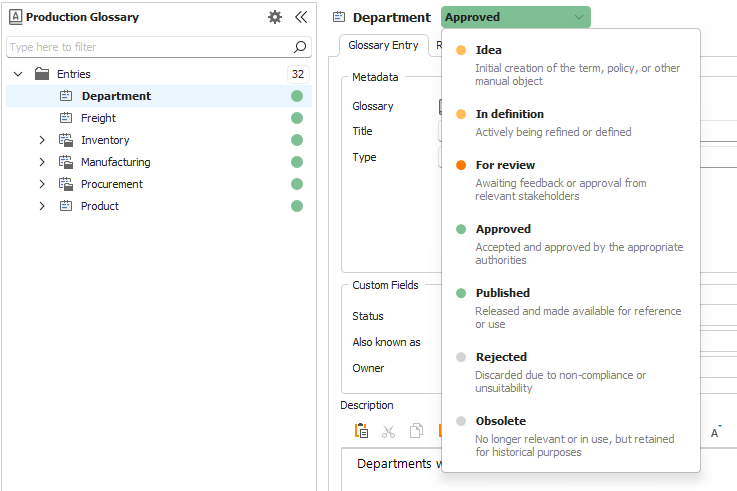
Steward Hub (beta)
Steward Hub is a suite of features crafted to assist Data Stewards in their daily tasks. With the aid of built-in rules, the Steward Hub recommends areas of improvement, suggesting documentation fill-ins and potential entity links.
As of 24.1, Steward Hub can suggest:
-
Creating new Terms,
-
Creating new Lookups,
-
Adding links between Lookups and Columns,
-
Adding links between Lookups and Terms,
-
Adding values to empty Lookups,
-
Reviewing Lookups' values,
-
Importing values to Lookups,
-
Reimporting values to Lookups.
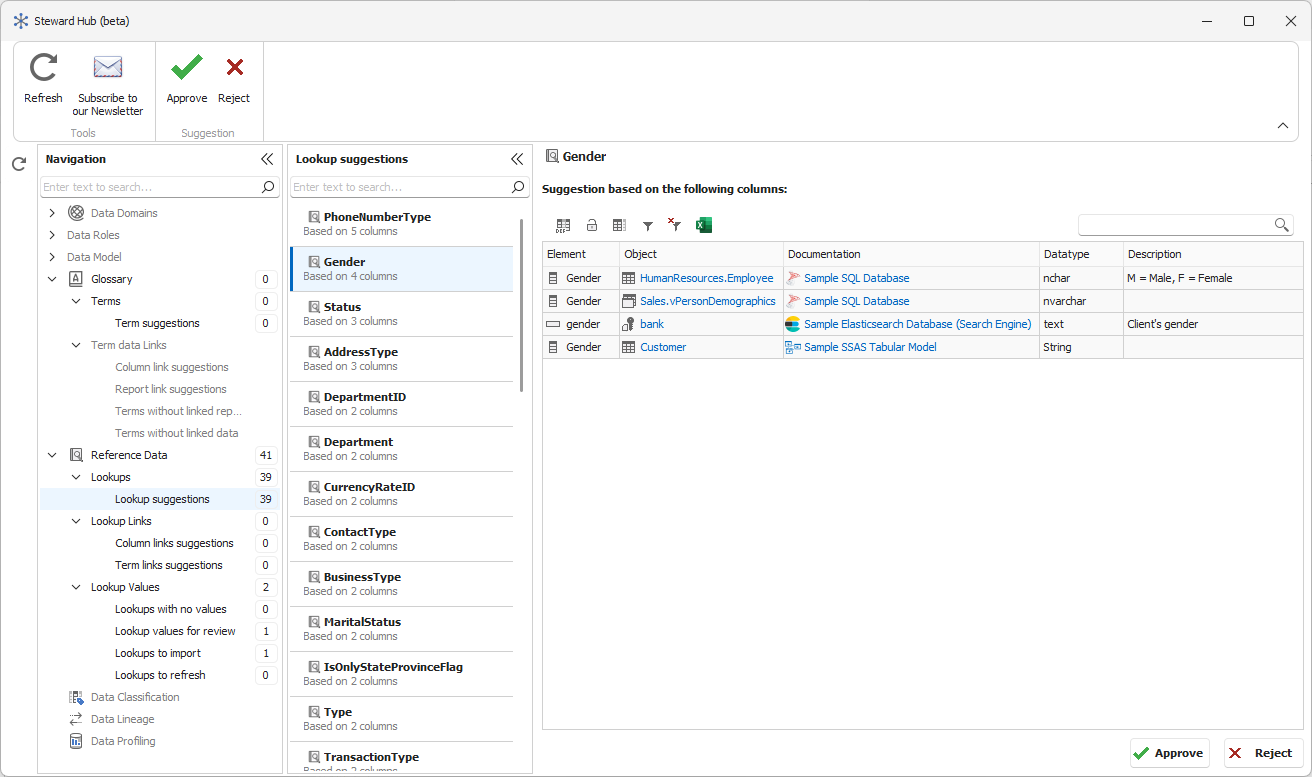
Data lineage from stored procedures
Dataedo will automatically parse and extract data lineage from stored procedures you have defined in your database. Right now, we support T-SQL dialect (SQLServer, Azure SQL, Synapse).
You can check out the exact scope of this feature in a separate article.
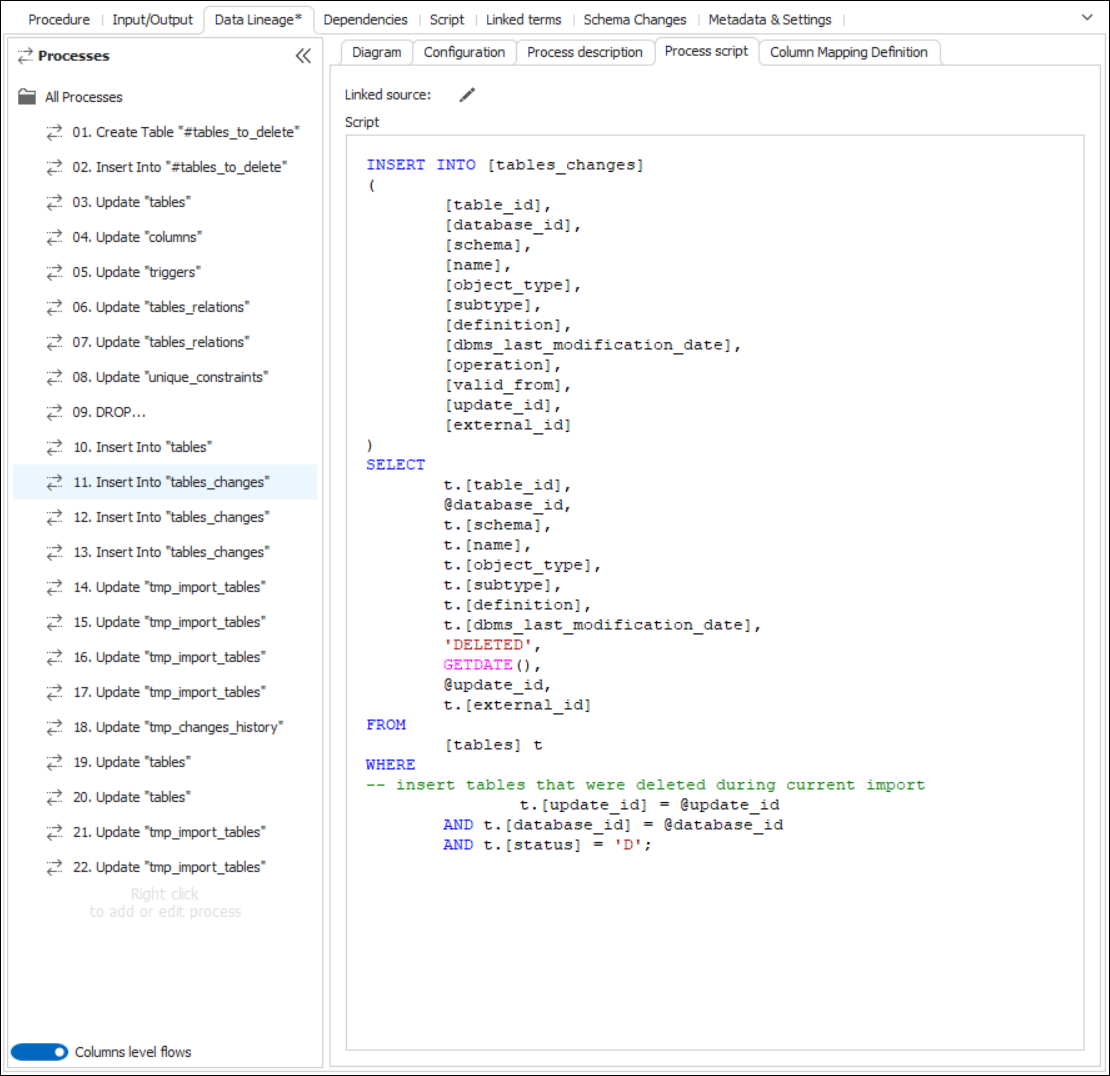
(Dataedo Desktop)
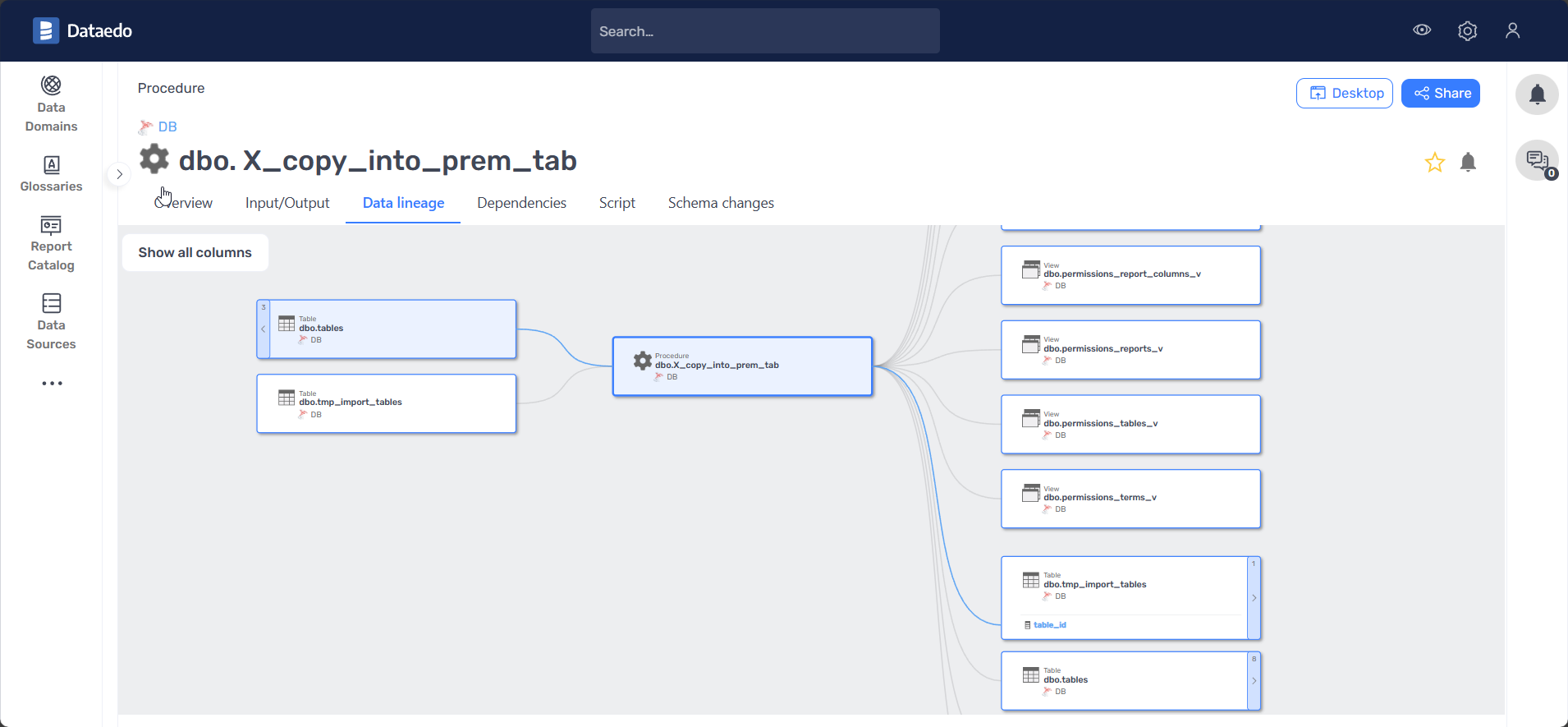
(Dataedo Portal)
New connectors
Databricks Unity Catalog
We introduced a Databricks metadata scanner through the Unity Catalog. It helps you scan, document, and understand your Databricks instance with a few clicks. You can read more details on the connectivity and connector scope in the separate article.
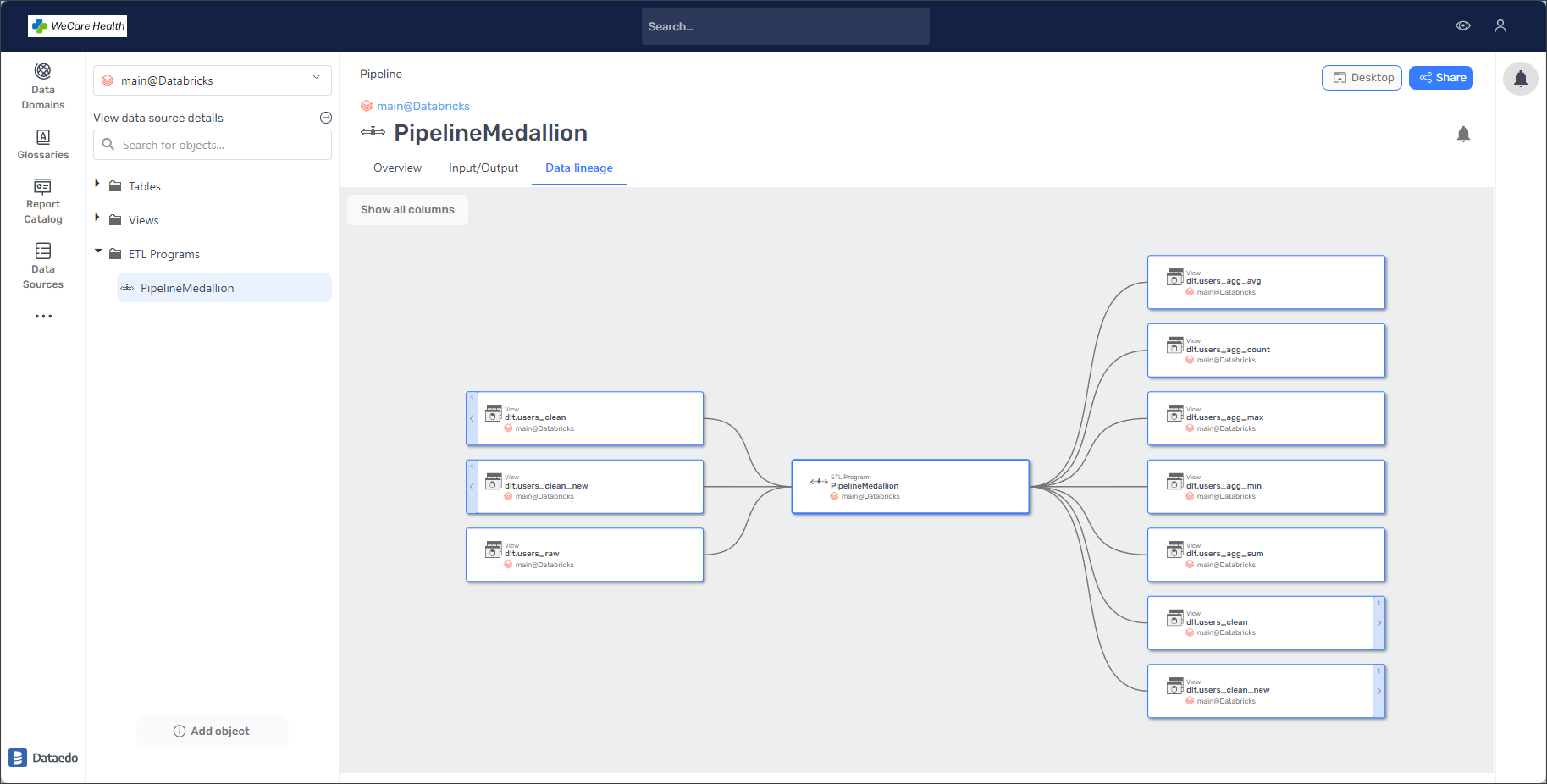
Import with copy&paste
Interface Tables are a way of exchanging data with the Dataedo Repository and any other external database through a defined set of tables used in cases when direct support for the data source is not available.
From 24.1, it is possible to paste data into a grid in the Desktop app and then import it. Additionally, we introduced support for importing datasets through Interface Tables Reporting.
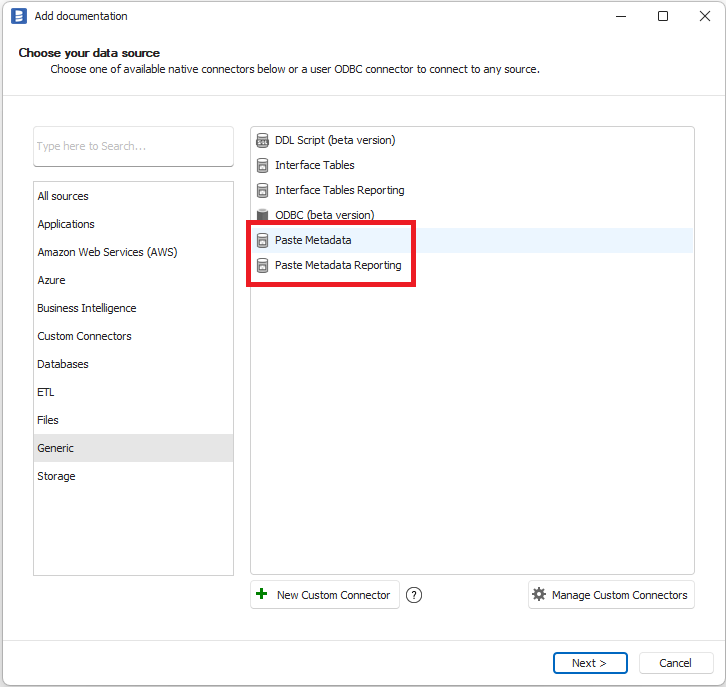
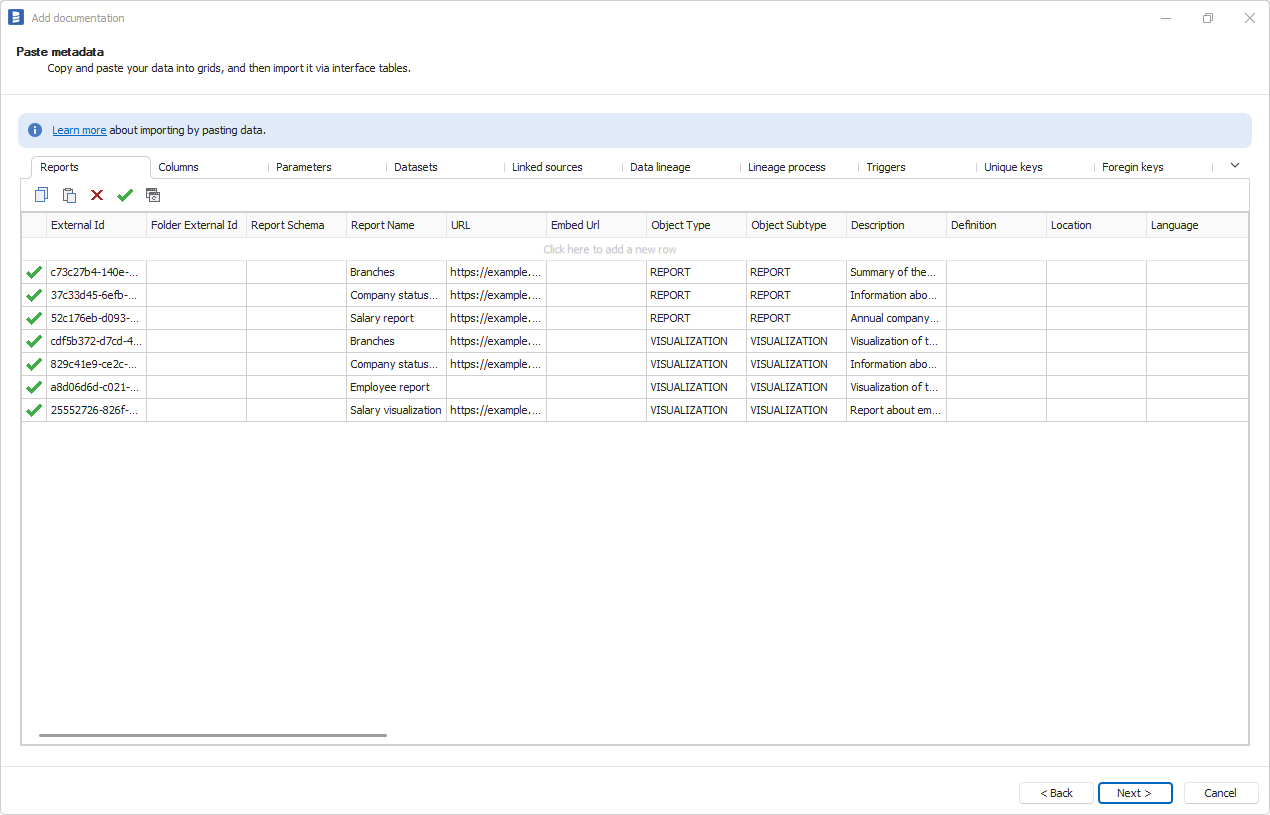
Connector improvements
PowerBI
- Importing paginated reports and their datasets with column and object-level lineage.
SSAS Multidimensional
- Column-level lineage for Named Queries.
SSIS
-
Importing project-level connections (as linked sources).
-
Data lineage from SQL Tasks (with parsing) and FTP Tasks.
Microsoft Dynamics365
-
Importing forms and their fields.
-
Importing user-defined views.
-
Data lineage on object-level from forms to tables and column level (with parsing) from tables to views.
Azure Data Factory
-
Support for all AzureAD auth options.
-
Importing JSON/AVRO/ORC datasets columns.
-
Data lineage based on pipelines runs so we're able to get parameters and variables values to build flows.
Jobs and sequences import
Dataedo will automatically pull your jobs and sequences during the import process from Oracle and SQLServer.
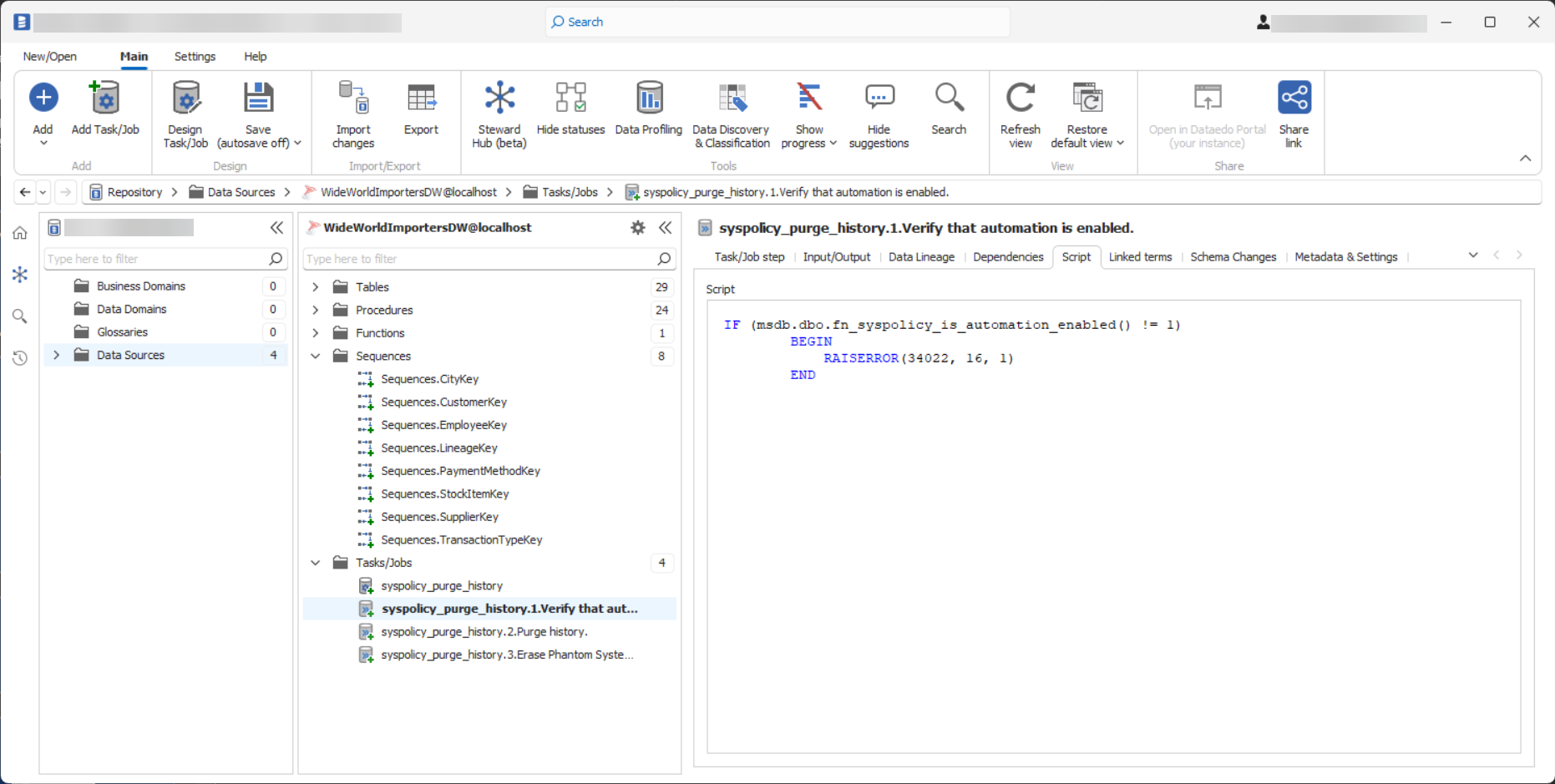
Import changes for structures
You can now import changes for structs-like objects (JSON, EXCEL, XML, etc.). Dataedo will keep track of those changes with a schema change tracking module.
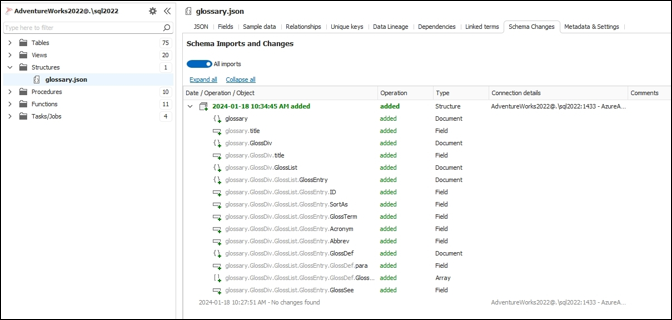

Neo4j
- Updated the connector to support newer versions of Neo4j. Now all versions up to 5.13 are supported.
Dataedo Portal
Lineage
This release we made a first step into improving our Data Lineage. We refreshed the UI, enhanced UX, sped up loading by fetching another inflows and outflows on demand and we made it easier to analyze via displaying only relevant context of the object.
Both object and column lineage is now available for most of the objects - containers like databases are yet to come.

Licensing
Some features of the Dataedo Portal are available depending on the license type you have. In Dataedo 24.1, the following features are available only with Dataedo Plan:
-
Statuses,
-
Business Domains and Areas,
-
AI Autodocumentation.
To unlock all the features available for your plan, an admin needs to provide online or offline license in the settings. Read more about the licenses in our dedicated licenses article.
New authentication options
We introduced new options for the end-users to log in into the Portal and we changed the layout on the login screen.
Right now, an Admin is able to select one login method to be a default one, all other enabled login methods are visible below and available just like they were before.
Additionally, Admin can configure login via AzureAD oAuth2, Google oAuth2 and an email with one-time access code.
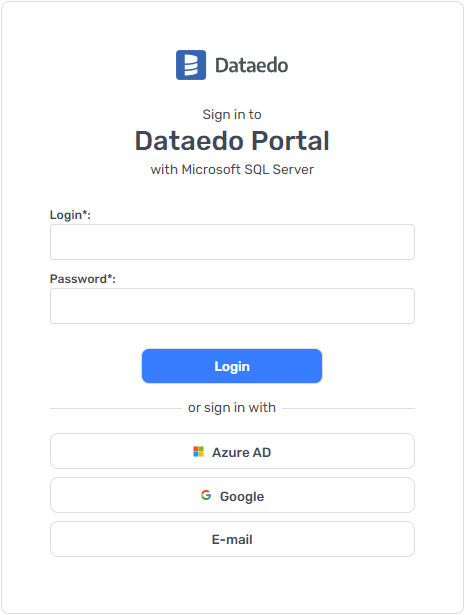
The first two options are rather clear, the latter requires SMTP server to be configured in Dataedo. Once this option is selected by a user, they need to provide their email address and an email is sent with an access-code to enter in the Portal.
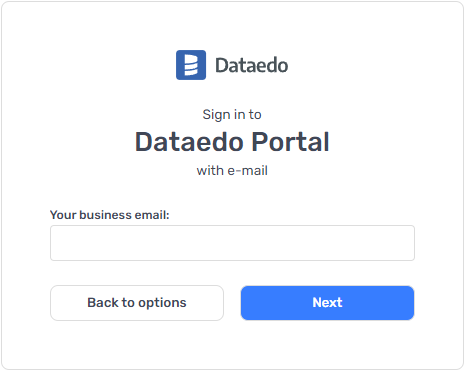
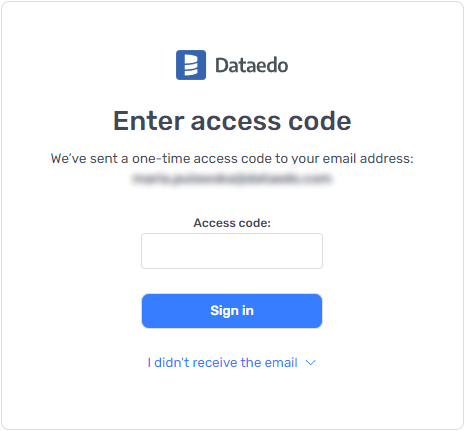
Keep in mind that at the moment there are no limitations regarding the email domain, meaning if you enable this login method, everyone with the link to your portal will be able to access it.
Dataedo Desktop
Spellcheck
For countries outside the US, we added support to spell check other languages than English.
From now on, we support:
-
German (Austria),
-
German (Germany),
-
German (Switzerland),
-
English (Australia),
-
English (Canada),
-
English (Great Britain),
-
English (United States of America),
-
Spanish,
-
French,
-
Dutch,
-
Polish,
-
Portuguese (Brasil),
-
Portuguese (Portugal).
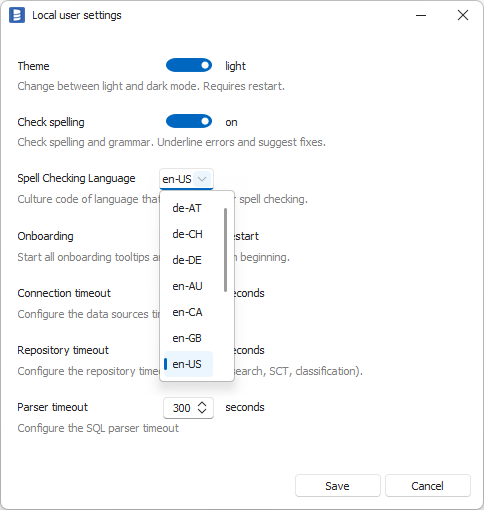
Administration console
In 24.1, we moved the Administration Console from a separate application into Dataedo Desktop.
Managing users will now be available from the settings tab in the navigation ribbon in Desktop. The functionality remains the same, you can grant users permissions to access Desktop here. Additionally, users can authenticate via both SQL Server Authentication and Azure SQL Authentication.
